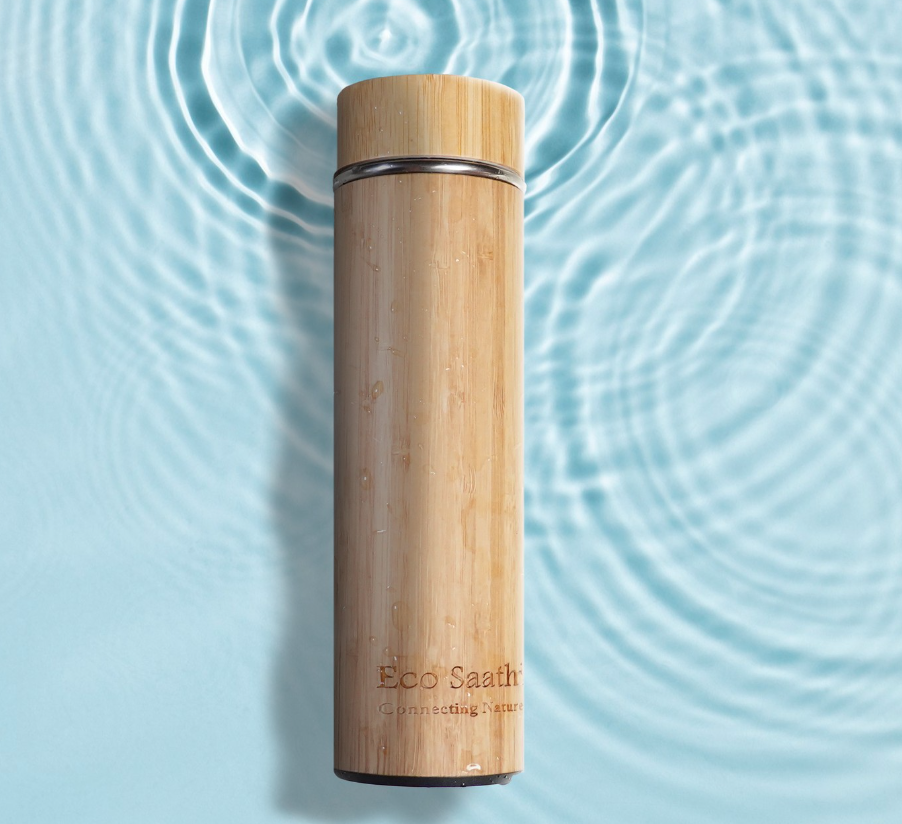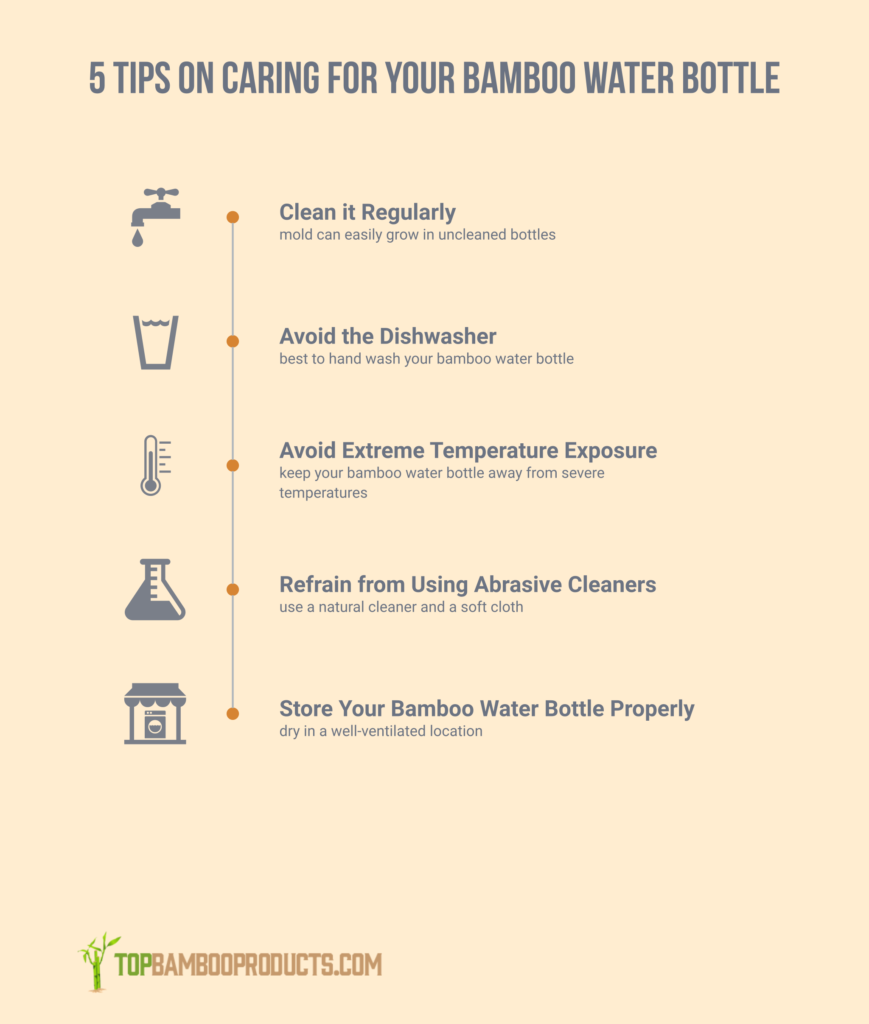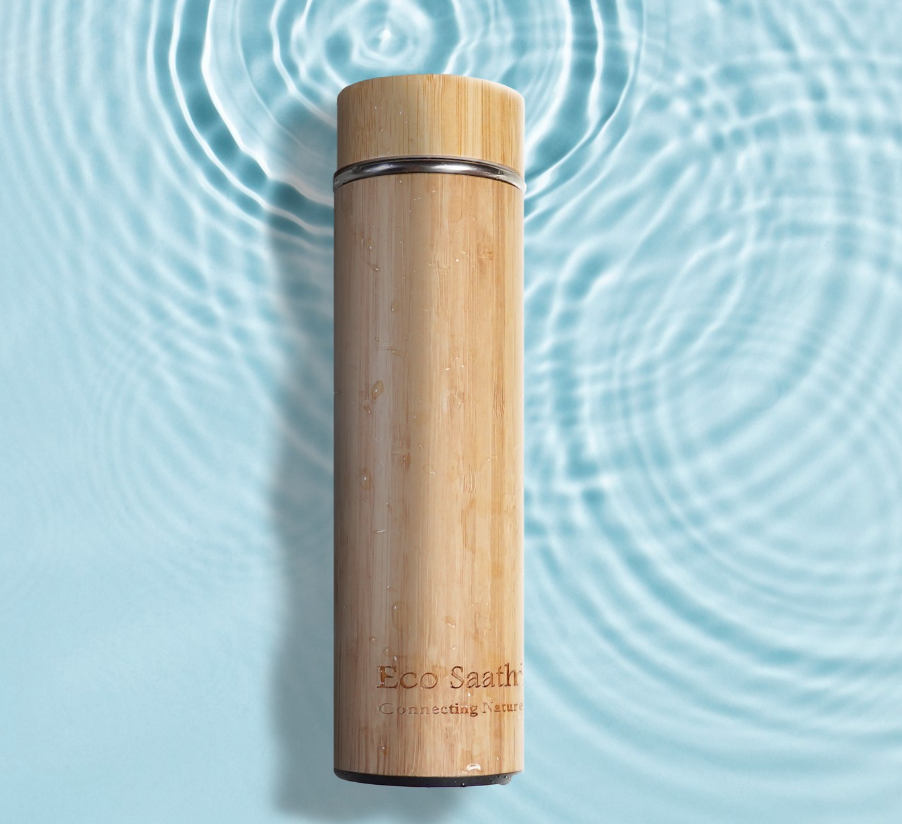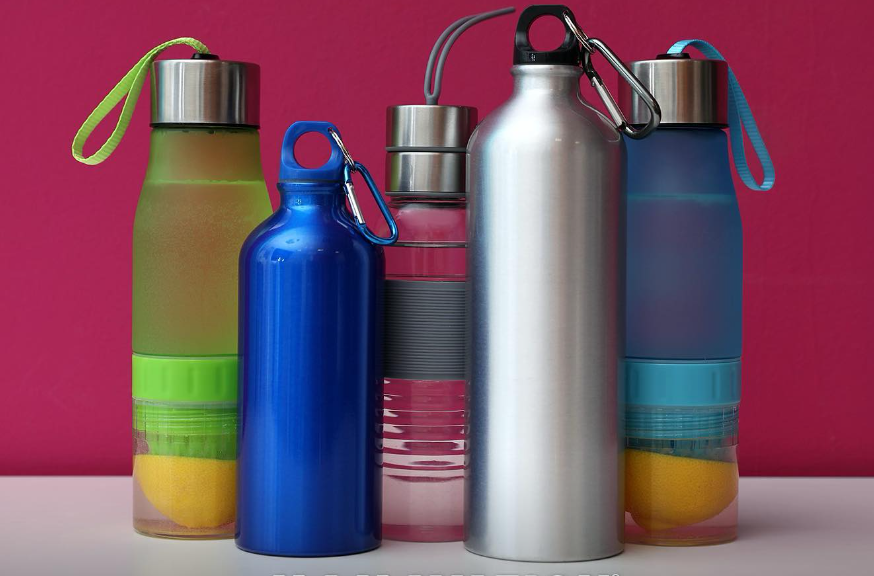An In-Depth Look Into How Long Does Bamboo Water Bottle Last
0Shares
Have you considered getting a bamboo water bottle but wondering how long it’ll last? Maybe it’s time to switch to something more durable and eco-friendly. I had tried reusable water bottles in the past, only to be disappointed by their short lifespan. However, after researching, I was pleasantly surprised to find that bamboo water bottles can last for years.
Some manufacturers claim that their bamboo bottles can last up to 3 years with proper care. Of course, that length of time may vary depending on the specific brand and how often you use it, but it’s certainly a relief to know that there’s a sustainable water bottle option out there that can stand the test of time.
In this guide, we’ll look in-depth into how long a bamboo water bottle can last, the factors influencing its life span, and tips for extending its longevity. So read on!
Is It Safe to Use a Bamboo Water Bottle?

Environmental awareness is increasing daily, and people prefer eco-friendly products when shopping. Nowadays, reusable water bottles are particularly popular, as they considerably reduce the carbon footprint of single-use plastic bottles. Fortunately, various reusable water bottles are available, including stainless steel, aluminum, glass, and even bamboo water bottles. While bamboo bottles seem trendy and eco-friendly, some people question whether they are safe.
Bamboo water bottles are made from bamboo, a form of grass that is usually considered environmentally sustainable. Thus, bamboo is straightforward to grow and has a short gestation period, making it a viable alternative to plastic bottles. Manufacturers of bamboo water bottles ensure that they are safe for human use and are a clean and eco-friendly product. Additionally, bamboo is safe to use as it’s naturally antibacterial and is essential in preventing harmful bacteria that may accumulate in the bottle.
However, several factors must be addressed when choosing a bamboo water bottle. Some manufacturers use a plastic or other materials liner to render the bottle leakproof. These liners can contain harmful chemicals such as lead and BPA, which can cause severe health issues. Therefore, ensuring that the bamboo water bottle you purchase is entirely free of these harmful chemicals is crucial.
The Benefits of Using Bamboo Water Bottles

I believe it’s essential for everyone to take small steps to help preserve our planet. One of the biggest ways we can all contribute is by using eco-friendly products, including bamboo water bottles. I will share some of the benefits I found when using a bamboo water bottle.
1: Very Low VOCs Level
One of the biggest benefits of using a bamboo water bottle is its low VOCs (volatile organic compounds) level. In other words, it contains minimal chemicals that can harm the environment. Bamboo is a natural and organic material; its fibers don’t require synthetic chemicals or pesticides to grow.
2: Antimicrobial Property
Bamboo has antimicrobial properties, which naturally repel bacteria and other microorganisms. It makes it an excellent material for products that come into contact with food and liquids. When you use a bamboo water bottle, you’re protecting yourself from harmful bacteria and also reducing the need for harsh cleaning chemicals.
3: Makes Your Drinks Taste Better
If you’re someone who loves your drinks to taste crisp and refreshing, then a bamboo water bottle is perfect for you! Unlike plastic or metal bottles, bamboo has no chemicals that can alter the taste of your drink. Plus, bamboo is a porous material that can absorb odors and flavors, which means your water or other beverages will taste better than ever!
4: More Porous
Speaking of bamboo being porous, this attribute also has another benefit. It means that when you drink from a bamboo water bottle, you’re hydrating yourself on a deeper level. That’s because the porous nature of the bamboo allows water to interact with more surface area, which ensures that you’re getting more hydration per sip.
5: No Toxic Ingredients
When you use a bamboo water bottle, you can be sure you’re not exposing yourself or the environment to toxic chemicals. As I mentioned earlier, bamboo grows naturally without synthetic chemicals or pesticides. It means that the final product, your bamboo water bottle, is completely free from harmful substances that can harm your health or the environment.
6: Reusable & Durable
Finally, bamboo water bottles are extremely durable and can be reused multiple times before needing to be replaced. This makes them perfect for daily use for morning coffee or an afternoon pick-me-up. Plus, they’re incredibly lightweight and easy to transport, so you can always access clean water wherever you go.
Overall, bamboo water bottles are an excellent choice if you’re looking for a sustainable and eco-friendly option.
How Long Does a Bamboo Water Bottle Last?

According to most manufacturers, a bamboo water bottle can last anywhere from 2 to 3 years. However, this lifespan can vary depending on how well you care for it. Here are some tips on maintaining and caring for your bamboo water bottle.
✔️Clean it Regularly
The first and most important tip for properly caring for bamboo water bottles is to clean them regularly. Bacteria and mold can easily grow in uncleaned bottles, leading to unpleasant odors and presenting health risks. You can use a bottle brush, warm water, and mild dish soap to keep your bamboo water bottle clean. You can also add vinegar or baking soda to the bottle and let it sit for an hour to remove stubborn stains and odors.
✔️Avoid the Dishwasher
Bamboo water bottles are not dishwasher-safe, as the high temperatures can damage the bamboo and compromise the structural integrity of the bottle. Therefore, it’s best to hand wash your bamboo water bottle. Additionally, avoid soaking the bottle for an extended period, as it can cause warping or splintering of bamboo.
✔️Avoid Exposing It to Extreme Temperature
Natural materials like bamboo are susceptible to extremes in temperature. As a result, keep your bamboo water bottle away from severe temperatures like those caused by boiling water or below-freezing temperatures. This can cause damage to the bamboo lid and the vacuum seal, causing leaks. Instead, use cool or lukewarm water to fill the bottle.
✔️Refrain from Using Abrasive Cleaners
Abrasive cleaners can scratch and wear out the bamboo, causing it to lose its shine and texture. Therefore, clean your bamboo water bottle with a soft cloth or sponge. Alternatively, you can use a natural cleaner such as vinegar or lemon juice, which is not abrasive and still do a fantastic job.
✔️Store Your Bamboo Water Bottle Properly
After cleaning and drying, store your bamboo water bottle in a dry and well-ventilated location. Storing it in a damp place can cause the bamboo to swell, warp, or crack.
By taking care of your bamboo water bottle, you’re preserving the environment and saving money in the long run.
How to Choose the Right One for Your Needs

Now that you know the benefits of bamboo water bottles, it’s time to find the right one for your needs. Here are some tips on how to choose a quality bamboo water bottle:
1: Size Matters
The first thing you should consider when purchasing a bamboo water bottle is its size. Determining how much water you need to drink throughout the day is essential to ensure you choose the right bottle. If you use your water bottle while hiking or exercising, choose a larger size, such as a 32-ounce bottle. On the other hand, if you prefer carrying a water bottle in your bag, a 16-ounce bottle would be a better fit. Remember that larger water bottles can be heavier and more challenging to carry around.
2: Check the Materials
The materials used in a bamboo water bottle determine its durability and safety. When choosing the right bamboo water bottle for your needs, ensure that the bottle is made from high-quality materials. For example, a bottle with a stainless steel interior and a bamboo exterior will prevent odors and keep your water fresh for an extended period. Also, ensure the bottle is free of harmful chemicals, such as BPA-free, phthalates, or lead, that can cause health issues.
3: LID Types
The lid is an essential feature to consider when choosing a bamboo water bottle. It should be easy to open and close, secure, and leak-proof. Different types of lids are available, such as twist-off lids, flip-top lids, and straw lids. Twist-off lids are the most common, and they provide an airtight seal. Flip-top lids are easy to open with one hand and can be used during your exercise routine. Straw lids have a built-in straw from which you can sip water without tilting the bottle.
4: Design and Style
Although the functionality of the bamboo water bottle is vital, the design and style will also contribute to how often you use it. Choose a bamboo water bottle that appeals to your aesthetic sense and suits your personality. Different colors and designs are available, such as plain bamboo wood bottles, painted ones, and even ones with inspiring messages. Choosing a design you love will make you more likely to use your water bottle daily.
5: Extras
Consider any extra features that might enhance your experience. Some bamboo water bottles come with carrying cases, which can help protect your bottle and make it easier to carry around. Others might include a strainer at the top of the bottle to filter out any impurities. If you like to infuse your water with fruits or herbs, look for a bottle with an infuser basket. Consider what will make your water-drinking experience the most enjoyable, and seek out those extras.
Remember, choosing the right bamboo water bottle for your needs is a step towards a sustainable lifestyle and a greener future.
The Best Alternatives to Bamboo Water Bottles

Bamboo water bottles have been popular with eco-conscious individuals who want to make a difference. However, some people may be searching for alternative bamboo water bottles that are still eco-friendly, durable, and functional. I’ll share some of the best bamboo water bottle alternatives you can invest in and contribute to sustainable living.
👉Stainless Steel Water Bottles
If you’re looking for an alternative to bamboo water bottles, stainless steel water bottles are an excellent choice. They are long-lasting, can endure knocks and bumps, are easy to clean, and are entirely recyclable. A Stainless steel water bottle is insulated and keeps your drink cold or hot for up to 24 hours. They come in various sizes and shapes and are ideal for taking with you on the go, whether to the gym or out for a picnic.
👉Glass Water Bottles
Glass water bottles have been gaining popularity because they are reusable, recyclable, and don’t contain any harmful chemicals. They are portable and come with a durable protective sleeve. Glass bottles with a protective sleeve give your bottle more protection against breaking and make it easy to carry around. Get creative with the designs or your bottle. The bottom line is that glass bottles are an eco-friendly option for those seeking alternatives to bamboo water bottles.
👉Copper Water Bottles
Copper water bottles are trendy due to their health benefits and minimal environmental impact. Copper bottles are long-lasting and come in various shapes with intricate designs. They are a natural disinfectant product that eliminates harmful bacteria from water. When a copper water bottle comes in contact with the water, it releases ions that purify and sterilize the liquid. The health benefits of copper water bottles include boosting digestion and reducing inflammation, although more research is needed to confirm these claims.
👉Silicone Water Bottles
Silicone water bottles are an excellent alternative to bamboo water bottles, especially for those who want something flexible and lightweight. They feature a collapsible design that saves space, making them ideal for traveling. Silicone bottles are easy to clean and come in various colors, sizes, and shapes. Most importantly, they are made from recyclable materials, making them eco-friendly.
👉Pottery Water Bottles
Pottery water bottles can be an excellent choice if you’re looking for something unique and aesthetically pleasing. These bottles are handmade using traditional techniques and natural materials like clay and sand. They are long-lasting and come in unique designs that make them collector-worthy. Pottery water bottles are eco-friendly and can keep your drink fresh for hours. The downside to pottery water bottles is their weight, making them inconvenient to carry around.
Choose your water bottle based on your personal preferences and habits, and remember that every little switch you make in your daily routine can make a significant difference in the long term.
Frequently Asked Questions
Can a bamboo water bottle be used for both hot and cold beverages?
I would say that you can use bamboo water bottle for hot and cold beverages. In fact, I use mine for both all the time! Not only is it environmentally friendly, but it’s also super versatile. I love switching between sipping on my ice water during the day to having a warm cup of tea in the evening without switching bottles or worrying about any residual flavors. Plus, the bamboo material keeps my drinks at their desired temperature for longer periods than a regular plastic or glass bottle.
Are bamboo water bottles dishwasher-safe?
Although some bamboo water bottles claim to be dishwasher-safe, the high heat and abrasive detergents used in dishwashers can damage the bamboo and potentially reduce the bottle’s lifespan. The caps and silicone seals can warp or even melt in high heat. I know washing by hand can be inconvenient, but trust me, it’s worth keeping your bamboo water bottle in tip-top shape. Plus, it’s a great excuse for a little mindfulness exercise as you take a few extra minutes to clean your bottle and reflect on your day.
What are the signs that a bamboo water bottle needs to be replaced?
Like any product with an expiration date, it’s important to know when it’s time to replace it. Signs like cracks or chips on the outside can compromise the integrity of the bottle and make it difficult to clean. Additionally, if you notice a lingering odor or taste after washing, it’s time to say goodbye and invest in a new one. Finally, if you’ve had your bottle for over a couple of years and it’s starting to show signs of wear and tear, it may be time to replace it. After all, bamboo water bottles are made to last!
Can a bamboo water bottle develop a taste or odor over time?
I read an article saying bamboo water bottles absorb flavors and aromas over time. It made sense to me since the bamboo material is porous. Since then, I thoroughly clean my bottle after every use to prevent any unpleasant taste or odor. Despite this minor setback, I still believe that my bamboo water bottle is a great investment for the environment and my health.
Are there any specific cleaning products or methods recommended for bamboo water bottles?
While no specific cleaning products or methods are recommended, I’ve found that using gentle dish soap and warm water works wonders. It’s important to rinse thoroughly and let it air dry completely before using it again. I’ve also heard some people suggest using a bit of vinegar mixed with water for tougher stains, but I’ve yet to try that method myself. Ultimately, cleaning it regularly and carefully ensures your bamboo water bottle remains in tip-top shape for all your hydration needs.
Final Words
So I have answered how long does bamboo water bottle last in this article. And switching to this sustainable option has been one of the smartest and most eco-friendliest decisions I’ve made. Not only do they last longer, but their lightweight and durable design makes them perfect for everyday use. And I believe you can use this bamboo product for multiple years with proper care and maintenance. So help reduce plastic waste by switching to a bamboo water bottle today! Enjoy your drinks and stay hydrated.
0Shares
